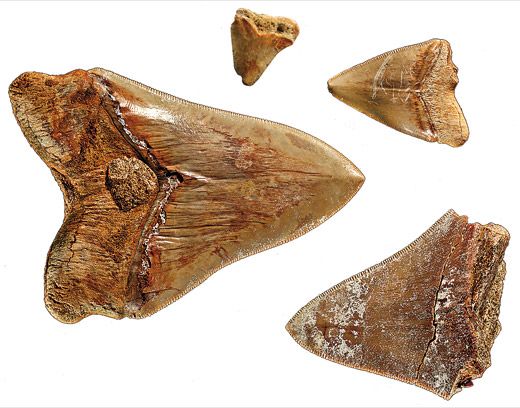A New Opportunity at the Panama Canal
The ongoing expansion of the waterway has given Smithsonian researchers a chance to find new fossils
/https://tf-cmsv2-smithsonianmag-media.s3.amazonaws.com/filer/Secretary-megalodon-teeth-631.jpg)
At the height of the construction of the Panama Canal in the early 1900s—the world’s largest and most expensive engineering project up to that point—workers were excavating the equivalent of one Suez Canal every three years. Panama’s current $5.25 billion expansion of that canal is a worthy sequel to that feat, and it has also opened doors for Smithsonian researchers.
The new blasting and digging provided “a fantastic opportunity to see fresh rocks,” says Carlos Jaramillo, a staff geologist and botanist at the Smithsonian Tropical Research Institute in Panama. “That’s very rare in the tropics, where almost everything is covered in vegetation.”
When the new canal locks are done, much of the exposed geology will disappear under concrete, but Jaramillo and some colleagues are making the most of the short-lived chance. Using new geological-dating techniques, they conclude that the isthmus connecting North and South America arose not 3.5 million years ago, the prevailing view, but as long ago as 15 million years. That revision has huge consequences, because the separation of the Atlantic from the Pacific would have had major climatic effects. It has been linked, for instance, to the onset of glaciation in North America. If the new date is correct, the causes of glaciation and other global upheavals will have to be rethought.
When I visited Panama earlier this year, I stood with Jaramillo in a field site covered in ancient shells. Scattered among them were the teeth of juvenile megalodons, prehistoric sharks that grew to be twice the size of the great white. Jaramillo’s team appears to have stumbled on a megalodon breeding ground.
The Smithsonian’s presence in Panama goes back to a biological survey in 1910. Today, we have research centers in Panama City, in the canal-side town of Gamboa and on Barro Colorado Island (in man-made Lake Gatun), as well as in seven other spots. In Gamboa, Klaus Winter, another staff scientist, is growing plants and trees in air with CO2 concentrations that mirror past, present and projected future levels. Among the questions he is asking: Will the mix of trees in tropical forests change as carbon-dioxide levels rise? Will these changes mitigate or exacerbate the rise in atmospheric CO2?
Panama, bridging two continents and host to the only canal that connects two oceans, is defined by linkages. Our scholars are also focused on connections: between geology and climate, flora and fauna, the natural and human realms—work that grows more relevant by the day. Nowhere will this be more vividly displayed than in the Frank Gehry-designed Biomuseo being built in Panama City, centered on the findings of Smithsonian research. Those intrepid Smithsonian surveyors of a century ago could not have known what they were starting.
